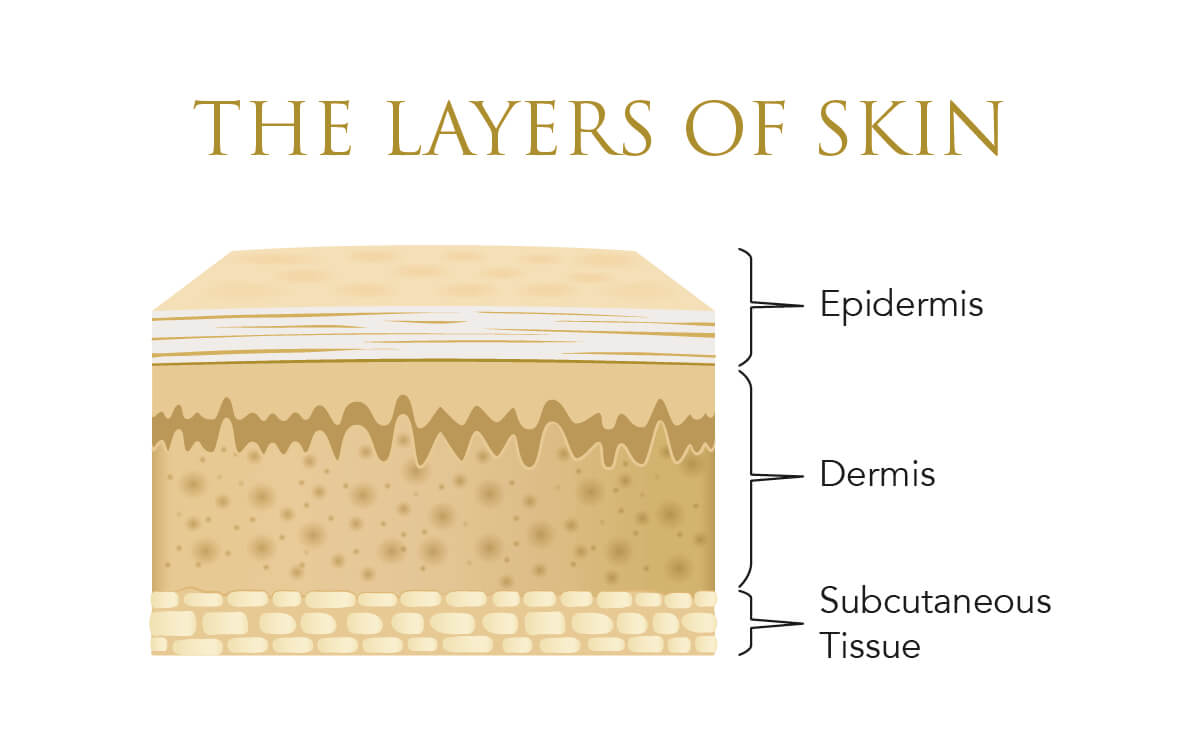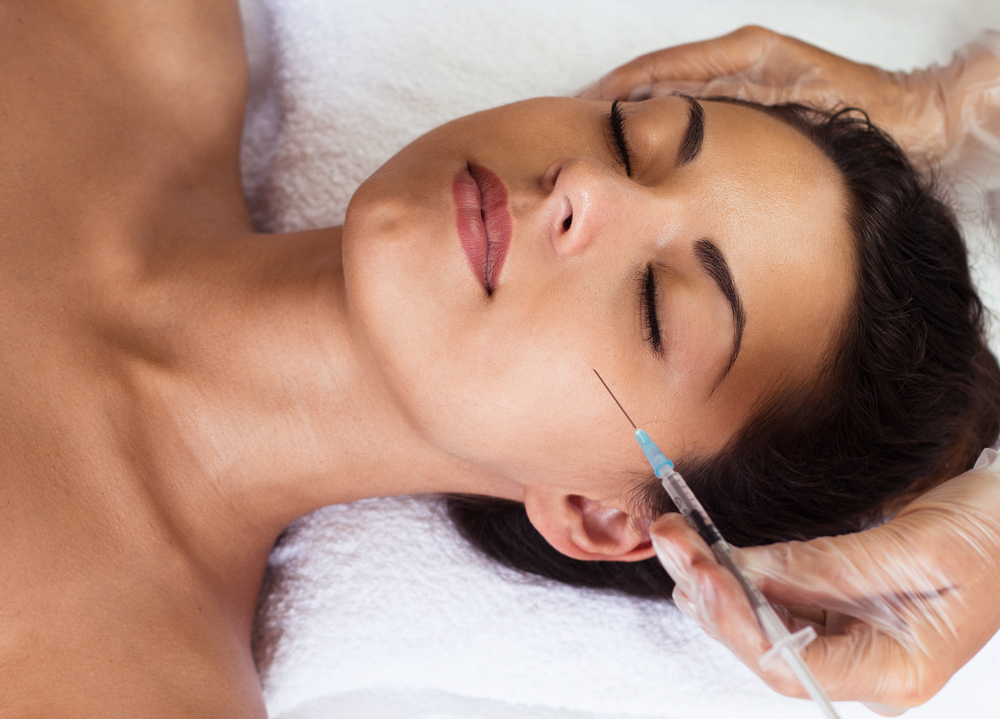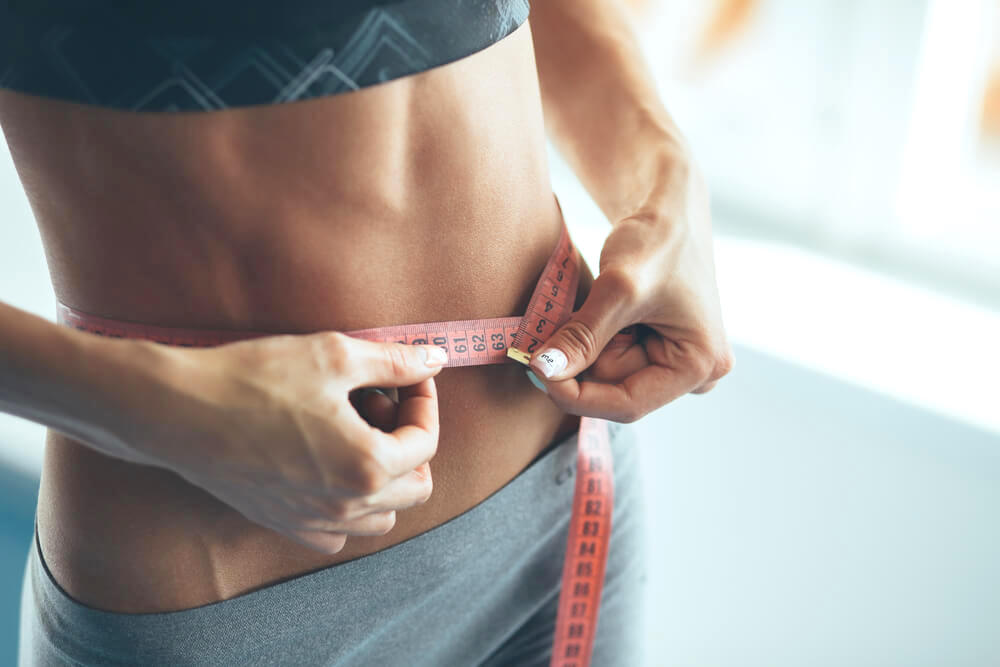Why Fat Isn’t All That Bad

People are often led to believe that fat is bad, and that this is something that needs to be dealt with as quickly as possible.
However, this isn’t actually true…
There are quite a few different types of fats out there, and some of them can actually be extremely beneficial, not only to your skin but also to your overall health.
What is Dermal Fat?
Your skin consists of three layers:
- Epidermis – this is the outermost layer of your skin. This is what gives your skin its color, while also acting as a waterproof barrier between your skin and the environment around it
- Dermis – this is the middle layer of skin. This is where you will find connective tissues, sweat glands and hair follicles
- Hypodermis – also known as subcutaneous tissue, the hypodermis consists of connective tissue and fat
The fat cells that are located in the hypodermis are known as dermal fat cells, or adipocytes.
What do these adipocytes do?
Their main job is to provide cushioning to your bones and joints, protecting them from damage. They work as insulation too, keeping the body warm in cold temperatures. Another job that they perform is the secretion of certain proteins that help to keep blood sugar levels regulated. They do this by decreasing the amount of glucose in the bloodstream.

However, there is one more surprising role that adipocytes have, and this was only recently discovered…
Infection Prevention
When your skin is damaged or broken, this then leaves your skin, as well as the rest of your body, susceptible to infections.
You are probably thinking…
Doesn’t the immune system kick in at this point?
It does, but it takes time for this process to happen. Your immune system consists of an extremely complicated network of different cells. These cells send white blood cells, along with antibodies, to the broken parts of the skin. These then prevent sepsis and other infections. However, it takes a little while for those blood cells to actually be delivered to the site of the wound.
Not only that, but those antibodies need to multiply quite rapidly in order to provide their protection. However, in most cases, it can take a few days before enough antibodies are produced to protect the body.
So, how does the body protect itself in the meantime?
This is where your fat cells come in…
Studies have shown that just a few hours after the skin has been broken, the number of fat cells at the wound site significantly increase. Not only are there more fat cells present, but the size of them changes too, with these fat cells being noticeably larger and denser.
However, that’s not all that was discovered…
The researchers also learned that those very same fat cells were also producing the cathelicidin antimicrobial peptide, also known as CAMP.
Wondering what an antimicrobial peptide actually is?
They are molecules that the immune system makes use of, sending these off to target and destroy any invasive viruses, bacteria, fungi and anything else that may be harmful to the skin and the body.
Antimicrobial peptides aren’t just limited to humans either…
Just about every living organism out there produces these as a way to protect themselves.
Does More Fat Mean More CAMP?
After reading about the results from the studies that have been carried out on fat cells and CAMP, it would be logical to conclude that more dermal fat means more CAMP, and therefore greater protection from infection.
However, that’s not strictly true…
Yes, those who were overweight were found to have more CAMP in their blood than those who weighed less, but that isn’t necessarily a good thing…
Having too much CAMP in your bloodstream can trigger a number of autoimmune and inflammatory conditions, such as:
- Lupus
- Psoriasis
- Rosacea
- Soft-tissue infections
Something else that may contribute to this is the fact that obese people are much more likely to be suffering from type 2 diabetes. This then means that the fat cells in the skin become resistant to insulin, which would therefore reduce the amount of CAMP that the body produces.
Wondering what happens if you don’t have enough CAMP?
That’s not good either. Without enough CAMP in your bloodstream, you would be more prone to infections, such as:
- Atopic eczema
- Staph infections
- Viral infections
The Loss of Fat with Age
As you can tell, your dermal fat is so important when it comes to keeping you safe and healthy. Although your immune system plays a huge role in this too, your fat cells are what look after you until your immune system fully kicks in. Without those fat cells, you would end up experiencing such a high rate of infection.
Unfortunately, those fat cells don’t stick around forever…
Your skin is full of these when you are a baby, which is how babies are able to stave off a wide range of infections.
However, this fat is slowly lost the older you get…
This is one of the reasons why people experience a loss of volume in their skin as they age, due to the fact that they are losing fat, as well as other vital skin-firming proteins.
Why does fat decrease with age?
Well, your fat cells begin as fibroblasts, which then develop into fat cells. As you get older, your fibroblasts aren’t able to turn into fat at the same rate, which then leaves the skin more susceptible to infections.
Wondering why you can’t just gain some extra weight to counteract this?
Because, as mentioned above, obesity isn’t a good thing either. It can lead to a number of autoimmune diseases, and also causes a certain protein to interfere with the fibroblasts, preventing them from turning into fat cells. That same protein, which is known as transforming growth factor beta, also prevents fat cells from producing CAMP.
Can You Replace Lost Fat Cells?
The older you get, the more dermal fat you will end up losing. You will notice this effect just by looking at your face in the mirror, as your face will start losing its volume and fullness.
Wondering if there is a way in which you can restore your dermal fat?
Unfortunately, there isn’t really a way for this to be done naturally.
However, you do always have the option of giving dermal fillers a try.
How do dermal fillers help?

These injections pretty much instantly add volume and definition back to the face.
They don’t replace the fat cells themselves, meaning that they will be no help at all when it comes to preventing infections in the way that your fat cells do. However, they can still be useful for a purely aesthetic reason.
So, if they aren’t made from fat, what are dermal actually made of?
It varies, with each filler material offering up different effects in terms of how long the filler result will last for:
- Collagen – three to four months
- Hyaluronic acid – around four to six months
- Calcium hydroxylapatite – around 18 months
- Polymethylmethacrylate beads – has a permanent effect, but also comes with several risks
Keep in mind, fillers aren’t going to replace your lost fat, and the majority of dermal fillers are temporary. They also won’t have any effect whatsoever when it comes to how quickly your skin is aging – your skin will still continue to age at the same rate, even if you have dermal fillers.
However, when it comes to a temporary solution to minimize the appearance of lost fat, dermal fillers do work quite well.
Alternatively, there are also skincare products pumped with volume-enhancing effects, such as the 24K DMAE Wrinkle Tightening Solution.
Thanks to a combination of ingredients like hyaluronic acid, gold, and DMAE, this topical solution provides a temporary reduction of visible lines and wrinkles, giving the skin an instantly lifted, contoured look.
Losing Weight Safely
What happens if you need to lose weight, but don’t want to leave yourself more susceptible to infections?
Obesity is never going to be good for you. Even being slightly overweight can increase your chances of developing a wide range of medical conditions.
However, when it comes to losing weight, you need to be careful…
It isn’t your dermal fat that you want to lose. Instead, you should be focusing on losing your visceral fat.
Never heard of visceral fat before?
It is often referred to as active fat, because visceral fat is what contributes to the health problems associated with being overweight.
Visceral fat is a type of fat that tends to be stored in the abdomen. It sits around a few of your vital organs, including your intestines, stomach and liver, but can also build up quite quickly in the arteries.
What does visceral fat do?
Its main role is to store energy, which the body can then use as and when that energy is needed. Subcutaneous fat doesn’t do this. Although they contain some energy too, they do not release this for the body to use unless the body happens to go into starvation mode.
Got some extra weight around your stomach?
This isn’t necessarily visceral fat. The fat that you can visibly see is more likely to be subcutaneous fat, with visceral fat being located deeper in the body, making it harder to actively spot.
So, how do you know how much visceral fat you actually have?
The only way to find out for sure is by undergoing an MRI or CT scan. Of course, both of these methods are expensive and take quite a bit of time.
Fortunately, there is another set of guidelines that health professionals use when it comes to determining how much visceral fat a person has…
It all comes down to the measurement of your waist:
- Women – those who have a waist larger than 35 inches are at risk of developing the health problems that visceral fat can cause
- Men – those with a waist larger than 40 inches will be susceptible to visceral fat-related health issues

So, now that you know that it is visceral fat, rather than subcutaneous fat, that you should be losing, how do you actually go about doing this?
There are a few methods you can try, since visceral fat is very responsive to exercise and diet:
- Regular exercise – ideally, you should be exercising for around half an hour a day. You need to be doing a mixture of both strength and cardio training. The cardio will help you to burn your visceral fat faster, while the strength training will increase your muscle mass, enabling them to then use up more energy. A combination of both will quickly target any visceral fat in your body
- Reduce stress – when you are feeling stressed out, your body produces a hormone called cortisol. Cortisol has a number of negative effects on the body, one of which is increasing the amount of visceral fat stored by the body. Therefore, keeping your stress levels low will help to prevent visceral fat from building up. There are many stress reduction techniques out there, from deep breathing and mediation to writing in a journal and finding a hobby. Make sure that you try several of these so that you can learn which one works best for you
- A healthy diet – it goes without saying that a healthy and balanced diet will help to keep your visceral fat levels down. Try to consume plenty of fresh, whole foods, and make sure that your cooking methods don’t involve too much fat either. Baking or steaming are so much better for you than frying. If you do need to fry, go for a healthier oil, such as olive oil, rather than opting for butter
The different types of fats in the body, along with the various roles that each one performs, can definitely seem a little confusing at first. However, it is so important to understand that not all fat is bad. While you do want to get rid of any excess visceral fat, in order to stay as healthy as possible, dermal fat actually has several different advantages, making this something that you may want to preserve for as long as possible.

